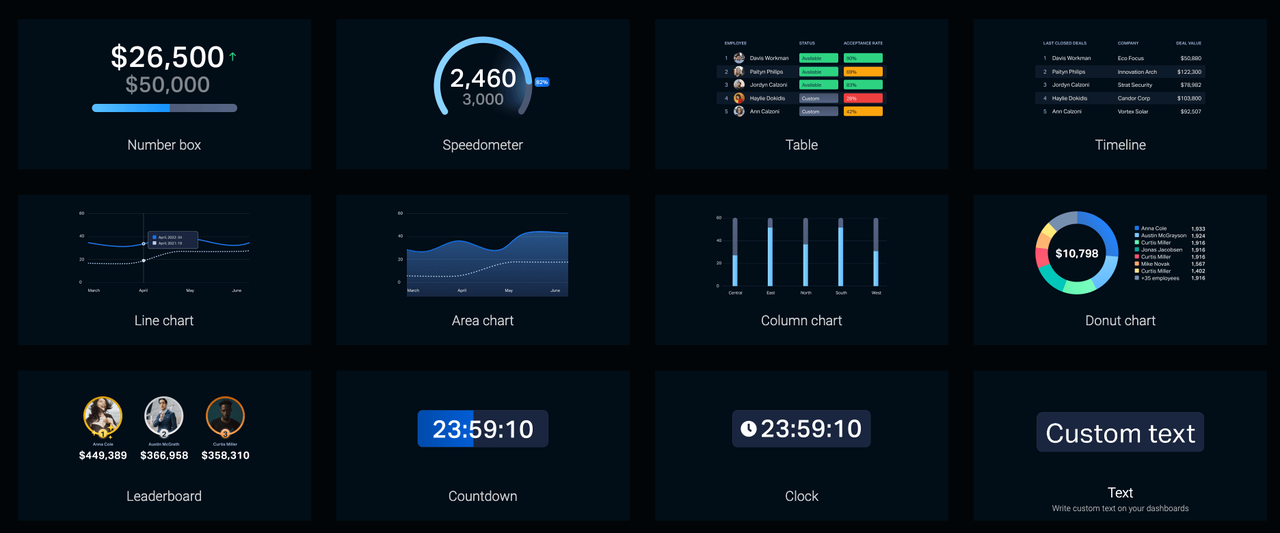Epicor ERP is a powerful business solution that helps organizations streamline operations and make data-driven decisions. One of its most valuable features is the Epicor Dashboard, which provides real-time insights through customizable widgets. These widgets allow businesses to track key metrics, monitor performance, and improve operational efficiency.
In this guide, we will explore the top 10 Epicor Dashboard widgets that can enhance decision-making, optimize workflows, and provide actionable insights.
1. KPI Metrics Widget
Why It’s Important:
Key Performance Indicators (KPIs) are essential for tracking business performance. This widget allows users to set up and monitor KPIs in real-time, helping decision-makers stay informed.
How It Helps:
- Displays essential business metrics at a glance.
- Customizable to track revenue, production rates, sales performance, and more.
- Helps managers identify trends and take proactive action.
Best Practices:
- Choose KPIs relevant to your business goals.
- Use color-coded indicators for quick status updates.
- Set alerts for deviations in KPI values.
2. Financial Summary Widget
Why It’s Important:
This widget provides a comprehensive overview of financial health, including revenue, expenses, profit margins, and cash flow.
How It Helps:
- Quick insights into financial performance.
- Helps finance teams manage budgets and forecasts.
- Reduces time spent generating manual reports.
Best Practices:
- Set thresholds to detect financial anomalies.
- Regularly update reports to reflect accurate financial conditions.
- Link with accounts payable and receivable modules for real-time tracking.
3. Sales Performance Widget
Why It’s Important:
Tracking sales performance is crucial for meeting revenue goals. This widget provides insights into sales trends, targets, and team performance.
How It Helps:
- Tracks sales growth and revenue trends.
- Helps sales teams focus on high-performing products and markets.
- Provides insights into customer buying behavior.
Best Practices:
- Set sales goals and compare them with actual performance.
- Use historical data to forecast future sales.
- Integrate with CRM for customer insights.
4. Inventory Management Widget
Why It’s Important:
Maintaining optimal inventory levels ensures smooth operations and prevents overstocking or stockouts.
How It Helps:
- Tracks inventory levels in real time.
- Provides alerts for low stock or excess inventory.
- Helps reduce carrying costs and improve order fulfillment.
Best Practices:
- Implement an automated restocking threshold.
- Integrate with supplier data for better supply chain visibility.
- Use demand forecasting to prevent stock issues.
5. Production Efficiency Widget
Why It’s Important:
This widget helps manufacturers track production output, downtime, and efficiency.
How It Helps:
- Displays production cycle times and bottlenecks.
- Tracks machine utilization and operator performance.
- Helps improve production scheduling.
Best Practices:
- Use historical data to optimize production planning.
- Monitor downtime causes to improve efficiency.
- Align production data with supply chain management.
6. Customer Support & Service Widget
Why It’s Important:
Customer satisfaction depends on timely support and service. This widget tracks open tickets, response times, and resolutions.
How It Helps:
- Ensures quick resolution of customer issues.
- Monitors agent performance and workload.
- Improves service quality and response efficiency.
Best Practices:
- Set SLA (Service Level Agreement) response targets.
- Automate customer feedback collection.
- Track unresolved tickets for follow-up actions.
7. Workforce Productivity Widget
Why It’s Important:
Managing employee performance and resource allocation is key to business success.
How It Helps:
- Tracks employee productivity and attendance.
- Monitors workload distribution across teams.
- Helps HR and management optimize workforce planning.
Best Practices:
- Identify high-performing employees for rewards and recognition.
- Track training needs based on performance data.
- Align workforce efficiency with project deadlines.
8. Supplier Performance Widget
Why It’s Important:
Supplier reliability directly affects business operations and profitability.
How It Helps:
- Tracks supplier delivery performance and order fulfillment rates.
- Identifies delays and inconsistencies in supply chain management.
- Helps businesses choose the best suppliers based on past data.
Best Practices:
- Establish performance benchmarks for suppliers.
- Use real-time data for negotiations and procurement planning.
- Integrate with Epicor’s purchasing module for better decision-making.
9. Project Management & Progress Widget
Why It’s Important:
This widget provides a centralized view of project timelines, progress, and completion rates.
How It Helps:
- Tracks project milestones and deadlines.
- Helps managers allocate resources efficiently.
- Provides visibility into project risks and delays.
Best Practices:
- Set project completion goals and track deviations.
- Use Gantt charts or Kanban boards for better workflow visualization.
- Align project updates with team collaboration tools.
10. Compliance & Audit Tracking Widget
Why It’s Important:
Regulatory compliance is critical for avoiding legal risks and penalties.
How It Helps:
- Tracks compliance metrics and audit results.
- Ensures adherence to industry regulations and safety standards.
- Helps maintain a transparent audit trail.
Best Practices:
- Automate compliance reports to reduce manual effort.
- Regularly update policies and procedures within the widget.
- Use role-based access to maintain security in compliance tracking.
Conclusion
The Epicor Dashboard is a powerful tool that enables businesses to make data-driven decisions by providing real-time insights into critical business functions. The top 10 widgets discussed in this guide can help improve efficiency, boost productivity, and enhance decision-making across different departments.
At Epicforce Tech, we understand the importance of leveraging ERP systems effectively to achieve operational excellence. By integrating the right widgets into your Epicor Dashboard, you can transform complex data into actionable insights, helping your business stay ahead in today’s competitive landscape.
Read More:
Enhancing Business Insights with Epicor Dashboards
Get the Most Out of Epicor Kinetic ERP Dashboards
How Epicor ERP Consultants Can Help You Achieve Industry-Specific Compliance


